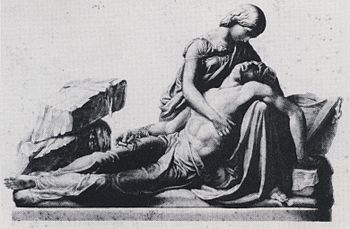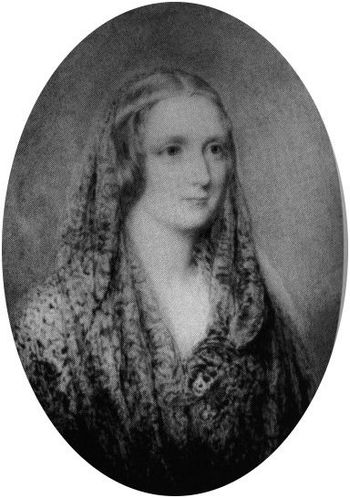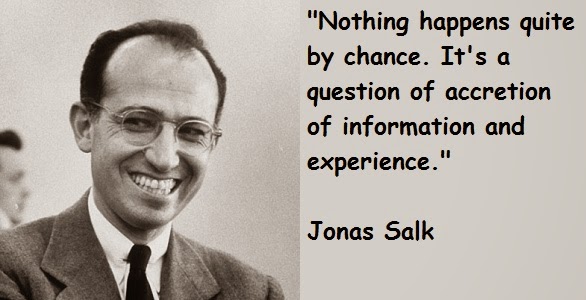| English: Original oil painting by Pappi, 2008. (Photo credit: Wikipedia) |
As with poetry, aspects of a romantic relationship are regular topics in songs. From longing to heartbreak to the joyfully unique feelings a person experiences when they are with a loving companion, popular music has it all covered. Relationships are very complicated self-imposed institutions and no one knows how they will turn out. Worse still, the majority of the stories we have told each other throughout time present too much of the “happily ever after” ideal that never happens. It little prepares us for the many twists and turns that lie ahead both in our partners and in ourselves. Sometimes those twists lead to a bizarre perversion of what was a loving romance. The following songs I have selected reflect on this perversion. Words like “trap” and “abuse” are used to describe something that other songwriters, more often than not, beautify and society, driven by our instinctive impulse to breed, venerates as our ultimate purpose. “Love” and “heart” are in there too, but they take the form of vulnerabilities that are being used as instruments of torture.
Sweet Dreams – The Eurythmics
This song really sets the tone for twisted relationships of all types. Despite having very few lyrics, the words convey a powerful message about how people interact. Keeping it generic, Annie Lennox and Dave Stewart could be talking about business, family, friendship or romance. It is rich for interpretation and different artists have given many unique slants on the song’s meaning. Marilyn Manson probably provided the most memorable cover, claiming a big chunk of the song’s legacy for his band. The slow creeping instrumental has been used for scenes in TV dramas and TV commercial to convey mounting darkness and danger. Manson, of course, revels in the song’s lyrics, singing them as a willing giver and receiver of sadomasochistic stimulation. I used his version of the song in my final live performance of my Dead Souls martial arts/dance act to make a dramatically eerie entrance. My fellow artistes and I walked through the doors with hooded cloaks draped over us. The cloaks were pulled back to reveal we each carried a gigantic live python to complement our Gothic costumes and make-up.
However, despite Manson’s excellent cover, credit has to be returned to the original masterpiece. The synth pop industrial instrumental might date the work squarely within the 1980s, but few can deny the impact of the initial vibrating initial beat. Lennox opts to sing the song with an icy coldness playing off the very mechanical nature of Stewart’s synthetic sounds. She delivers the words with a factual resolve. The Marquis de Sade would have approved.
I first heard this song on Saturday morning TV. It was long before I grew to realize the brilliance of the track, but Annie Lennox is visually striking throughout. She is most typically beautiful later on in the music video, but she will always be remembered for the assertion she strikes in her androgynous guise at the song's commencement as she lays down the law. Abuser or abused. What is it going to be?
I first heard this song on Saturday morning TV. It was long before I grew to realize the brilliance of the track, but Annie Lennox is visually striking throughout. She is most typically beautiful later on in the music video, but she will always be remembered for the assertion she strikes in her androgynous guise at the song's commencement as she lays down the law. Abuser or abused. What is it going to be?
Running up that Hill - Kate Bush
It is a great shame that this classic pop music hit did not get the title Kate Bush had intended. However, all agreed that calling a song “A Deal with God” would kill its airplay in Catholic countries like Spain and Italy. Nevertheless, this title better represents what the song is all about. Here we have a Faustian prayer not put to Satan, but God, asking for a gender reversal. The passion conveyed in the lyrics of this song separate it from the normal yearning and loving songs we are accustomed to hearing. It breaks heterosexual relationships down to their very core, demanding a deeper level of empathy that twists reality.
Sadly the song’s re-release for the closing ceremony of the London Olympics in 2012 show how badly the song’s meanings have become distilled. A song about the struggles between the sexes in a relationship had become a motivational song for runners. Its use seemed as ignorant as the Republican’s use of Bruce Springsteen’s “Born in the USA” as an anthem for the Ronald Regan election campaign. I was first drawn to “Running up that Hill” when it was used for the children’s TV drama series, “Running Scared”. Although the instrumental worked very well for the series opening credits the song’s title was being used purely at face value. Why the song was used again for the closing credits of the wimpy adaptation of Robert Cormier’s children’s classic novel, “The Chocolate War”, which is set in a boy’s only school, completely escapes me.
Curve’s “Men are from Mars, Women are from Venus” takes this idea further and moves on to describe a battle between the sexes that seems inevitable, and I like to think of that as a better tribute to Bush’s original vision than its most common interpretations, whether or not Tony Halliday and Dean Garcia had “Running up that Hill” in mind.
Suspicious Minds – Elvis Presley
The song that is often cited for resurrecting Elvis “The King” Presley’s career was penned by Mark James. Jealousy can twist a relationship, especially when there is a degree of justification for the feeling. The song describes a dysfunctional relationship, where the narrator is distrusted by his partner. It was written by Mark James who felt he and his wife were caught in a trap due to his confusing feelings over a childhood sweetheart. It’s a simple song expressing the torment of the narrator who feels there is no future in a relationship, where his partner has so much suspicion and yet he cannot leave due to the love he feels for her.
Thin Line Between Love and Hate – The Persuaders
The title says it all and the song delivers. It opens with a lover returning home, presumably from an illicit liaison, late at time only to be greeted by an attentive female partner. The narrator muses over how the lover doesn’t give a second thought to the care being shown by the female partner, as she hangs up his coat and asks whether he is hungry. Later he will wake up in hospital with dressings all over him and incredulous to his partner’s act of cold revenge.
Written by Robert and Richard Poindexter and first recorded by The Persuaders, as the title states, the song looks at how close the emotions between loving someone and hating someone can run, and overlap. Crimes of passion are not uncommon. History and mythology are full of them. I see this song as a counterpoint to “Sweet Dreams”, explaining the consequences to the abusers, liars and manipulators in this world.
Tainted Love – Marilyn Manson (cover)
So why do so many people seemingly find themselves in destructive relationships again and again? “Tainted Love” is probably the most obvious song for addressing twisted romance. The lyrics speak of desires that butt up against common sense. The singer is repelled as much as he is drawn to a certain individual. It might describe the symptoms of obsession or addiction in their most emotional form. The singer lays out why the relationship is not working in a factual way and he regularly states he desire to be free, as the love seems to have consumed and taken everything out of him, but the listener is not convinced.
The 1965 original written by Ed Cobb and recorded by Gloria Jones is often forgotten. It is now probably best remembered as the synth pop classic covered by Soft Cell. Again, Marilyn Manson took the lyrics and ran with them in the sleaziest interpretation possible. Nevertheless, he conveys the anguish and stimulation present in the song’s essence in a type of tortured relish that seems to scream at the seeming irrationality of human emotion.
Melt – Siouxie and the Banshees
I guess a couple’s sexual preferences and tastes are really a bit too subjective to be called “twisted”, but if we are to follow the rather boring adage “kinky in the bed means crazy in the head” then I guess I can warrant the inclusion of one song. Consider the inclusion to be more in line with my warped and ironic humour than any sort of stuffy conservatism. That is my excuse anyway.
There are several rock and pop songs about sadomasochism. Despite the deliciously subversive territory there are few that are actually very appealing. I enjoy most of Depeche Mode’s work, but their “Master and Servant” is too obvious in its lyrical content yet also rung through the pop filter that it lacks any form of risqué impact. “Strangelove” is more subtle and a better song by them, but it’s still not quite right.
Select Magazine said of the song:
"The sensual lyrics of "Melt!" compare an intense sexual interlude with a lover to dying. Its lyrics can also allude to a S&M encounter
"The Baudelairean imagery of 'Melt' evokes claustrophobic scents of opium, sex and sickly flowers, and lapses into morbidity with lines like, 'You are the melting man and, as you melt, you are beheaded,'"
Select Magazine said of the song:
"The sensual lyrics of "Melt!" compare an intense sexual interlude with a lover to dying. Its lyrics can also allude to a S&M encounter
"The Baudelairean imagery of 'Melt' evokes claustrophobic scents of opium, sex and sickly flowers, and lapses into morbidity with lines like, 'You are the melting man and, as you melt, you are beheaded,'"
Ava Adore – The Smashing Pumpkins
When it comes to romance The Smashing Pumpkins are a bunch of sick puppies. “Ava Adore” plays with a mixture of conflicting emotions and juxtaposition of ideas. The singer seems as much at the mercy of his feelings as he casts himself in a dominant role. “Ava Adore” twists and turns from conventional affection to disrespectful lust. There seems to be a feeling of consuming chaos and imperfection that the singer is struggling to put right as he both fawns over his lover and is challenged by her influence over him.
Unlike “Tainted Love”, the singer is trying to convince himself he has some control over the consuming feelings of adoration he has for his lover. He doesn’t play the role of the victim, but as one of Lennox’s wannabe abusers.
The Perfect Drug – Nine Inch Nails
Trent Reznor’s songs often fall on the subject of obsessive love. Perhaps his greatest piece from his debut album, “Pretty Hate Machine”, “Something I can Never Have”, is a beautiful ode to loss love that builds towards the frustrations present in us all when we are reminded of the damage a relationship can do to our very sense of identity. The same album also has “Sin”, which describes what sounds like a volatile combination of distrust and physical abuse. However, “The Perfect Drug”, released as a single from the Reznor orchestrated multi-artist movie soundtrack for David Lynch’s “Lost Highway”, does not immediately address loss. You get the impression that the singer is right in the depths of a twisted relationship. The ground rules of “Sweet Dreams” are now irrelevant and the wishes for change, suggested by “Running up that Hill”, have fallen on deaf ears. The fears of “Tainted Love” and the pathetic attempts to regain control of “Ava Adore” have all now been passed as darkness envelopes the psyche of the lover in “The Perfect Drug”.
Like “Tainted Love”, we have someone who gives everything to their lover and suffers for his self-sacrifice. This is a song about complete descent into obsession and emotional dependency. The song has three parts. It begins with quick fire lyrics and choppy chords, as we find our lead protagonist losing control of his mind that appears to be on speed. As he races up to the object of his feelings we get a typical Trent Reznor outcry, which then slows things down. With a sense of dangerous foreboding he slowly restates what he wants before launching into the song’s chorus, a repetition of the song title.
The Game – Disturbed
“The Game” runs with the twists shown in “The Thin Line Between Love and Hate” towards almost hate-filled obsession via some of the masochism we have seen in songs like “Vow” and “Tainted Love”. In many ways, this song exemplifies the concept of a one-sided twisted relationship. The song narrator builds up his feelings of resentment towards his lover, implying his dangerous personality as he goes. He sees what she has done to him as being a type of game that he has allowed her to win. Expressing his liking for the pain she has caused him he wants to give her a taste of the same. He describes their relationship in unambiguously combative language and provides us with a portrait of potentially violent domestic abusers. The narrator progresses through his rage and implies actual murder. Whether or not that is a metaphor we are left to wonder, but he also possibly suggests she isn’t his first “victim”.
Everything about You – Ugly Kid Joe
Possibly further on from even this type of relationship is when one partner actually loathes the other. “Ugly Kid Joe” did it with a humorous poppy rock anthem. The narrator reels off a list of all the things he hates, including things that directly relate to his partner. The vocals are sneering and drip with acid. There is no reason given at all for why he feels this way. If the narrator is upset or hurt, he doesn’t show it. This is not a song about retribution or revenge. The narrator is a misanthropist who has a general hatred for everything in life before he closes in on the subject of the song. Despite such consistent and relentless negativity, the narrator is gleeful about his position and it is good fun in that respect. The song did remarkably well in the UK. I certainly found it to be a welcome antidote to an era in the 1990s that saw such painfully sickening love anthems like Bryan Adams’ “Everything I do” topping the UK charts for 15 miserable weeks.
Self-Esteem - The Offspring
The other side of the coin revealed a narrator who suffered at the hands of their partner. The Offspring’s “Self-Esteem” gave us a story of a downtrodden person in a relationship. It begins late at night with the narrator’s lover returning home intoxicated. He cannot resist her despite suspecting her of being unfaithful. We then hear about her lying and serial cheating with his friends. This poor guy is not the vengeful monster of “The Game”, but a clear martyr to his circumstances.
No Feelings – The Sex Pistols
The Sex Pistols were never going to give us anything but warped love songs. “No Feelings” is a huge savage joke on just about every love song written. The narrator only loves himself and is proud of that fact. It is hard to ascertain the status of the relationship being described. The narrator just shows his total disdain for the person who follows him around and the song is a virtual catalogue of callousness.
Vow – Garbage
The suffering victims in “No Feelings” and “Self-Esteem” do not resemble the narrator of this song. Garbage’s debut single included improvised opening lines by lead singer Shirley Manson who immediately revealed the narrator’s desire to abuse her lover. However, we learn that she has been abused too and yet keeps coming back, but there is a strong line of vengeance in the lyrics. This is exactly what the songwriters in the band wanted to convey. We really don’t know the vengeance she has in mind, but it seems to be far more in line with the rules set down by “Sweet Dreams” than the crassness shown in “Thin Line Between Love and Hate” and “The Game”. This avenger is going to destroy everything in her partner’s life including their very soul.
I already had Garbage's brilliant debut album and had played the tracks on a continuous loop in my car for ages. It was a blossoming time in my life. I was just shy of 20 and driving the length and breadth of the country teaching kickboxing for a corrupt teacher. I had just finished my first serious relationship and been given (not necessarily learnt) some cold hard lessons. Retreating into the seductive embrace of materialism, I jumped at the opportunity to work at a Versace photo shoot at Luton Hoo. Whilst a procession of top of the range status symbol cars drove past I spent most of the evening having something of makeshift slumber party with the models. It was hardly a night of decadence. We all had a job to do. But it was less boring than the usual waiting around you have to do on a shoot. A lasting memory of that night was hearing "Vow" coming over the speakers in the stately home.
I already had Garbage's brilliant debut album and had played the tracks on a continuous loop in my car for ages. It was a blossoming time in my life. I was just shy of 20 and driving the length and breadth of the country teaching kickboxing for a corrupt teacher. I had just finished my first serious relationship and been given (not necessarily learnt) some cold hard lessons. Retreating into the seductive embrace of materialism, I jumped at the opportunity to work at a Versace photo shoot at Luton Hoo. Whilst a procession of top of the range status symbol cars drove past I spent most of the evening having something of makeshift slumber party with the models. It was hardly a night of decadence. We all had a job to do. But it was less boring than the usual waiting around you have to do on a shoot. A lasting memory of that night was hearing "Vow" coming over the speakers in the stately home.
Piece of My Heart – Janis Joplin
It comes across as a charming melancholy song, but there is darkness throughout the lyrics. The narrator is telling her partner to continue destroying her by taking more of her heart. It is masochism of the least titillating kind. As with “Self-Esteem”, the narrator pretty much defines her relationship as one where she is abused. Almost conditioned to take it, unlike “The Game” and “Vow” she does not look forward to exacting revenge in kind. This is no violent Instead she begs for her lover to hurt her heart some more. Although I cannot personally relate to this type of condition, I have seen it too often. The narrator seems to have gone far beyond someone who will take negative attention over no attention. In the disturbing theme of Tammy Wynette and Billy Sherrill’s “Stand by your Man”, the song’s narrator seems to wear the hurt she endures as a type of medal. However, whereas Wynette might have a point that her little country tune is more about overlooking her male partner’s shortcomings, Joplin’s takes it to a far darker level and reveals the damage that can be done to a person’s character in a one-sided relationship.
Love will Tear us Apart – Joy Division
The song’s title is the epitaph for its tragic songwriter. Ian Curtis, who was the lead singer for Joy Division, was a deeply troubled man and his anguish is represented in the dark tone of the band’s work. “Love will Tear us Apart” is a veritable anthem for twisted relationships. It is a step much further on from “Suspicious Minds”, but like James before him, Curtis was singing about actual events happening in his life at the time. Here the narrator is actually having an affair and is feeling the death of his relationship with his wife. Love does tear them apart, as it is far from being a clear cut matter. This is at the essence of destructive relationships before it ends. The lyrics describe the unbearable coldness and estrangement a once loving couple experiences and I can completely relate to the experience. The depression he felt led to Curtis’s eventual suicide.
Perish - Curve
This song spoke to my heart and, like “Love Will Tear us Apart”, it resonates deeply with me. It describes co-habiting with an ex-lover, at least in the early stages. The narrator describes the former partners as ghosts; two people living together, but who have clearly drifted apart and are irreconcilable. It discusses the folly of two people staying together for the sake of their memories. The result of this is that they will lose their souls completely. It’s a truly beautiful and tragic song. However, unlike other melancholy songs that speak of lost loves this is more about the loss of one’s own identity and a trap that is arguably much worse than one described in “Suspicious Minds”.
Barbed Wire Love - Stiff Little Fingers
What better way to conclude than with Stiff Little Fingers' wonderfully metaphorical description of love. Twisted as the barbed wire in the song title, the very simplistic yet ingenious song uses the props and scenery of life in war-torn Northern Ireland to present the story of a relationship. Pain, sex and heartbreak is all described as two lovers meet and hold hands across no man's land, uncovering the booby traps and severe wounds that love can inflict. It perfectly bookends and summarizes the world that "Sweet Dreams" laid out at the beginning of this list.
Conclusion – Selection Justification
Putting it in simple terms, I love all the songs listed. Billy Ocean’s roguish “I Sleep Much Better (in someone else’s bed)” might have qualified, but I grew out of it when I was about 14 and it doesn’t really qualify as a twisted relationship, it’s just about a serial cheater. This differs from The Offspring’s entry, where the focus is on the cuckhold partner’s twisted willingness to accept his cheating partner’s behaviour. There are plenty of others and several of the artists listed mainly sing about twisted relationships. However, I wanted to hit various points of a destructive relationship and find songs that best represent them without repeating the point. I tried to keep songs about jealousy being directed towards partners and not outside of the relationship, as it really doesn’t tell us much about the twisted nature of a relationship. Dolly Parton’s wonderful “Jolene”, which has been covered so well by Queen Adrena, gets excluded on this basis. However, this also disqualifies horrible hodgepodge creations like “Feel it” despite their interesting premises.
Don't forget to check out Jamie Clubb's main blog www.jamieclubb.blogspot.com
















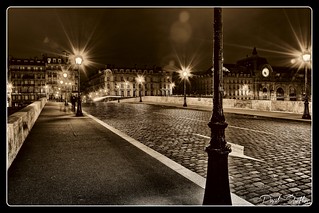







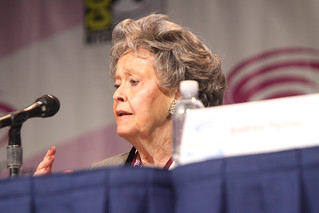





































![Cover of "The Brave One [Blu-ray]"](http://ecx.images-amazon.com/images/I/51etUM-gZxL._SL350_.jpg)













